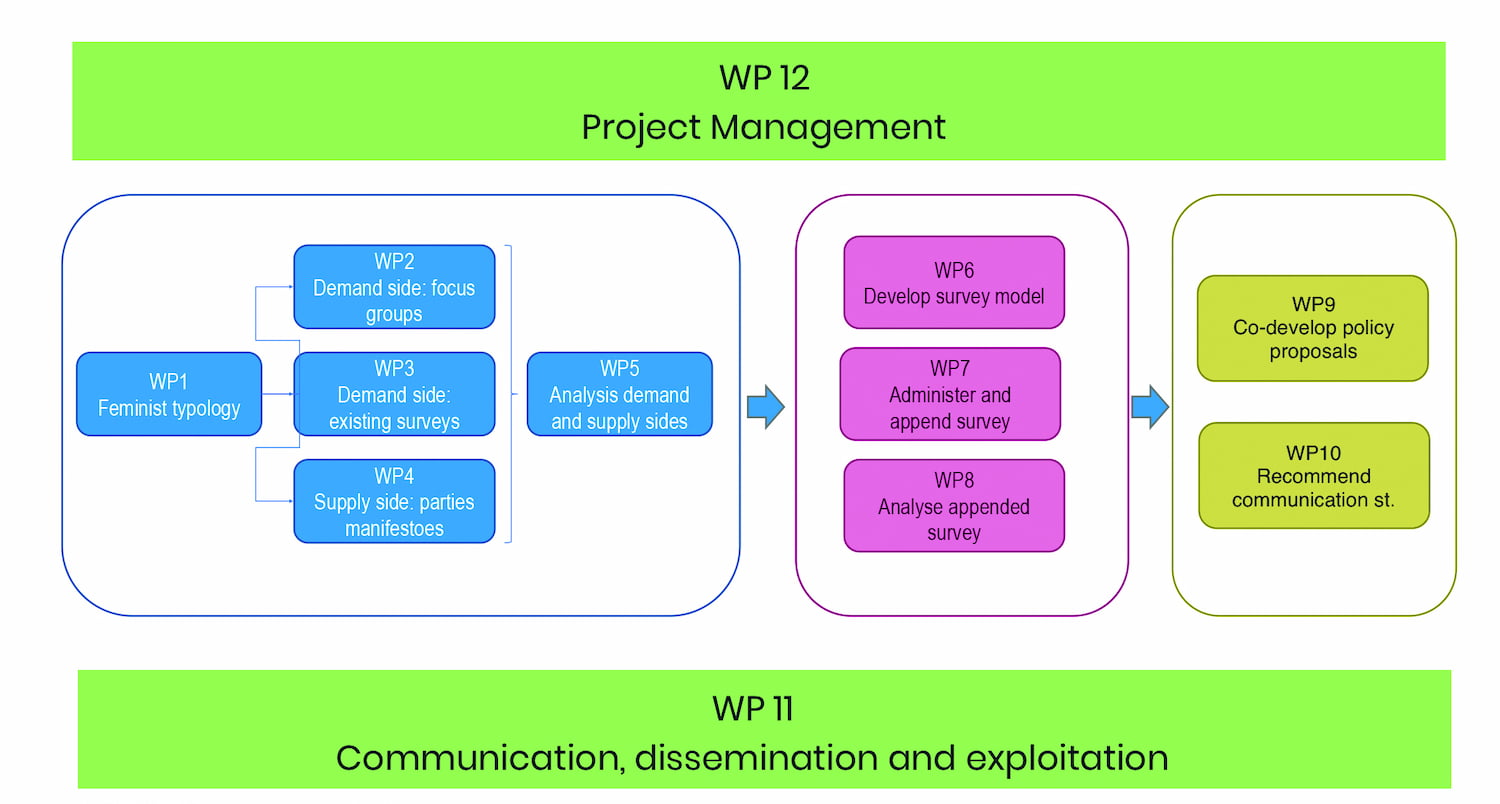METHODOLOGY
UNTWIST is divided in three methodological phases. The first phase (including WP 1 to 5) maps the demand and the supply side on issues related to sex and gender, in relation to UNTWIST objective one. The second (through workpackages 6 to 8) explores how substantive gender-based representation impacts party preferences and voter decisions, in relation to UNTWIST objective two. The third (developed in workpackages 9 and 10) focuses on collaboration with the wider society to co-develop policy recommendations to improve sex- and gender-based representation by mainstream parties.
WORKPACKAGES
The UNTWIST project is organized into 12 Workpackages, each lead by different partners within the Consortium. Workpackages one to five are related to UNTWIST’s first objective: determining how mainstream parties represent gender needs and demands and testing if right-wing populist parties act as niche parties. Workpackages six to eight focus on the second objective: test the rationality of voters and the importance of gender needs and demands as well as citizens’ traits in voting behaviour. Workpackages nine and ten focus on UNTWIST’s third objective: finding untwisted ways of representing gender needs and demands and making policy recommendations, including how to communicate. Work package eleven focuses on the fourth objective. It is crucial because it aims to involve stakeholders in the project from the beginning and facilitate transference and exploitation of results. Finally, package twelve ensures that we keep on track and everything is done correctly.
OBJECTIVES
UNTWIST has four main objectives:
- First, to test the hypothesis that mainstream parties are not representing a large set of gender and feminism-related worries, needs and demands. This finding will support the idea that right-wing populist actors act as niche parties in this area. And, more generally, this provides some initial support for the notion that voters could be brought back to mainstream parties by improving gender representation.
- Second, to test the importance of sex/gender traits and citizens’ gender attitudes on voting behaviour. This will allow us to identify the profile of citizens who could be better represented. Furthermore, it will also point us towards the more critical areas of gender representation that must be addressed.
- Third, to find untwisted ways to represent gender needs and demands and answer gender worries, turning them into political recommendations.
- Fourth, to involve political actors, mainly political parties, in implementing UNTWIST’s policy recommendations.
These objectives are completed through the following work packages.

Workpackages one to five are related to the first objective: determining how mainstream parties represent gender needs and demands and testing if Extreme-Rightist parties act as niche parties.
Workpackages six to eight focus on the second objective. They test the rationality of voters and the importance of gender needs and demands as well as male and female traits in voting behaviour.
Workpackages nine and ten focus on the third objective: finding untwisted ways of representing gender needs and demands and making policy recommendations, including how to communicate.
Work package eleven focuses on the fourth objective. It is crucial because it aims to involve stakeholders in the project from the beginning and facilitate transference and exploitation of results.
Finally, package twelve ensures that we keep on track and everything is done correctly.


